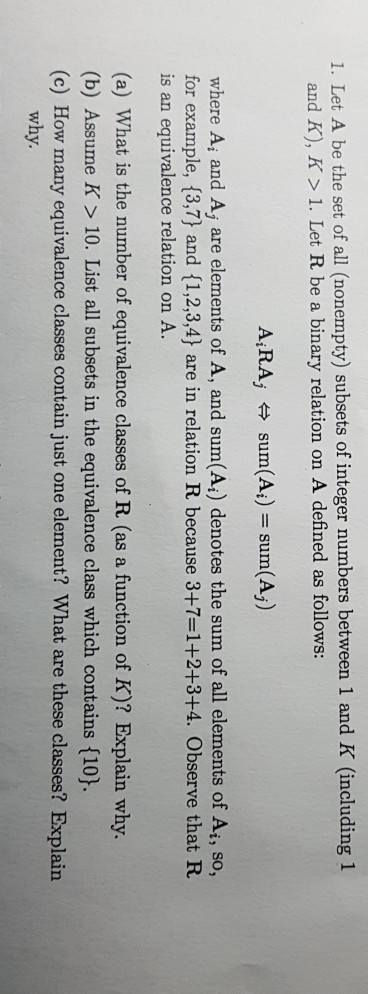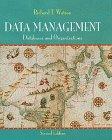Answered step by step
Verified Expert Solution
Question
1 Approved Answer
1. Let A be the set of all (nonempty) subsets of integer numbers between 1 and K (including 1 and K), K> 1. Let R

1. Let A be the set of all (nonempty) subsets of integer numbers between 1 and K (including 1 and K), K> 1. Let R be a binary relation on A defined as follows: AiRAjsum(Ai) = sum(Aj) where A, and A, are elements of A, and sum(At) denotes the sum of all elements of A, so, for example.(37) and { 1,2,3,4) are in relation R because 3+7=1+2+3+4. Observe that R is an equivalence relation on A. (a) What is the number of equivalence classes of R (as a function of K)? Explain why. (b) Assume K> 10. List all subsets in the equivalence class which contains (10) (c) How many equivalence classes contain just one element? What are these classes? Explain why
Step by Step Solution
There are 3 Steps involved in it
Step: 1

Get Instant Access to Expert-Tailored Solutions
See step-by-step solutions with expert insights and AI powered tools for academic success
Step: 2

Step: 3

Ace Your Homework with AI
Get the answers you need in no time with our AI-driven, step-by-step assistance
Get Started


